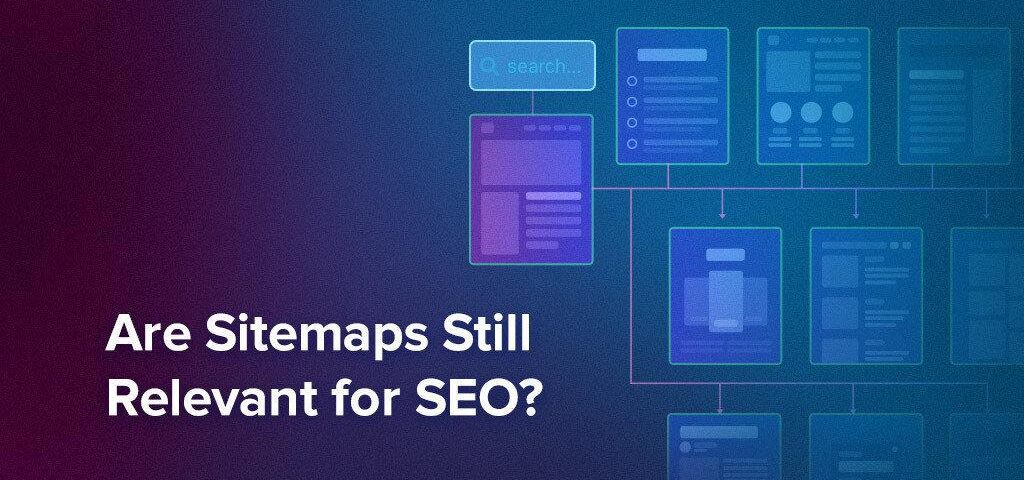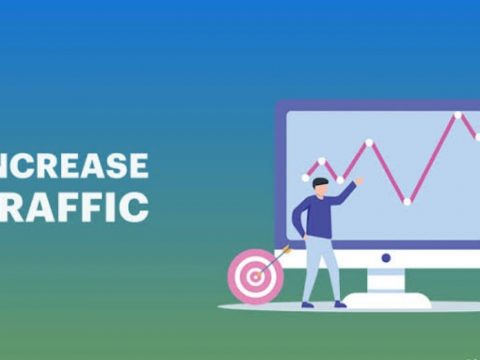- Have any questions?
- +91-9971603600
- +91-9717419044
- [email protected], [email protected]
HOW TO USE XML SITEMAPS TO BOOST SEO

Facebook Gives Advertisers Control over Placement of Instant Article and In-stream Ads
September 27, 2018
What Are Google Discovery Ads and Do They Work
October 22, 2020HOW TO USE XML SITEMAPS TO BOOST SEO
As the world of the web is getting Developed continuously, Google and SEO are also developing. Which means, if something was good until yesterday, it may not good today. Either, it has been outdated or might be some better options available in the market.
The issue mainly occurs when every single man and their dogs have submitted their answers in the forums and circulated suggestions on the blogs and point of view with social media takes little time to extract relevant information from misstatement or misreport.
When utmost part of the population share their basic understandings, which defer a sitemap to Google Search Console is relevant. It is probably possible that you do not know about the difficulties behind the smooth implementation of XML sitemaps in order to turn SEO Key Performance Indicators (KPIs).
Now, we are going to explore best practices for XML sitemaps, which helps you to know more about it.
Following are the topic that we cover in this article:
- What is XML Sitemap?
- What is the format of XML SITEMAP?
- What are the types of XML SITEMAP?
- What is the indexation optimization of XML SITEMAP?
- What is the best practice checklist of XML SITEMAP?
What is XML Sitemap?
XML Sitemap is a list of URLs that guides the visitors on your website about the relevant web pages. In other words, a kind roadmap helps search engine to find out what content is available on your website and how to reach there.
See the below-mentioned image to know more about XML Sitemap.
With the help of the XML Sitemap file, the search engine will easily find the all above displayed nine pages with a single visit.
In order to find out these nine pages, it would need to skip five internal links of the website.
It especially formed for those websites, which requires fast crawl indexation such as.
- Which contain thousands of pages or a deep website architecture.
- Continuously add new pages.
- Continuously rewrite the content of existing pages.
- Suffer from weak internal linking and orphan pages.
- Lack a strong external link profile.
Note: If you submit the sitemap without index URLs, then it can help to boost deindexation. In such a case, where you have so many URLs to deindex, then this procedure is more adequate instead of delete URLs in Google Search Console. While using this method of deindexation, you should be quite focused and make sure that you can add only those URLs temporary in sitemaps.
Key takeaway
Although search engines can easily find out your URLs with the help of specialised methods by adding the pages on XML Sitemap, which you listed to be shown on the landing page. However, there are is no assurance that XML definitely crawled up your pages. Therefore, index and submit them separately can increase the probability.
What is the format of XML SITEMAP?
All the tags that have been using by one-page websites would have this format of XML sitemap.
The question arises, how should an SEO use these tags? Is all the metadata valuable?
Loc also known as Location Tag
Location tag is among the very important tags and contains complete and authorized version of URL location. These tags will show your website’s protocol such as HTTP or https properly. It also includes or excludes World Wide Waves (www) as your preferences.
It can also help you in order to implement your hreflang handling for international websites.
With the help of XHTML link, you can recognise the language and region variants for every single URL. Here you can also minimize the loading time of your website, which other links may not offer.
If you want to know more about hreflang, then you can visit Yoast.
Lastmod also known as Last Modified Tag
It is an additional but immensely recommended tag, which enables a user to find out the previous or last modified file (along with date & time).
According to the Google’s spokesperson, John Mueller, Google mainly uses this feature to recognise the lastmod metadata in order to understand that when page last modified and if it should be crawled or not. Contradicting advice from Illyes in 2015.
It features is especially valuable in a case where the publisher of content would have to inform Google that you are the original publisher of such content.
Make sure never update the modification date in a case where you have not made some meaningful changes. In addition, always try to puzzle the search engine that your content is new and fresh. Nevertheless, Google finds it outdated or old then you would be palatalized for that.
Changefreq also known as Change Frequency Tag
As the name suggests itself, Changefreq is mainly used to determine that how frequently content is expected to be changed on an URL in search engines.
However, according to the John Mueller, Changefreq cannot play an important role in XML Sitemaps and only use to ascertain the time stamp directly.
Priority tag
Priority tag official tells the search engine that how precious a page also related to your remaining URLs on a scale bounded by 0.0 to 1.0.
Although, it was always considered as the hint to the search engines from the beginning, and John Mueller and Illyes both have cleared that they ignore it.
Key takeaway
Yes, it is true that your website requires XML Sitemap, but it is not compulsory. Make sure that you are using lastmod correctly and always be alert about submitting the right URLs.
What are the types of XML SITEMAP?
If we talk about the types of Sitemaps then you can find the variety of it. Let us discuss few of them in brief.
XML Sitemap Index
XML Sitemaps have two limitations mentioned below:
- A XML Sitemap index file can includes maximum of 50,000 URLs.
- An XML Sitemap file is limited of 50MB.
You can restrict the limit of XML Sitemaps with the help of Gzip “(GZip is a form of data compression – i.e. it takes a chunk of data and makes it smaller. The original data can be restored by un-zipping the compressed file)” in order to save bandwidth for your server. However, If you unGziped the sitemap then you would able to exceed its limit.
In a case, where you want to exceed the limit then primarily you need to divide your URL into several XML sitemaps. After that, these all sitemaps will merge into an individual index file and that file is known as sitemap-index.xml. A website that contains numbers of web pages can create several index files to store sitemaps and always try to save them in a separate extension.
In order to make it easy for search engines to find your sitemap index files in a first try, you need to follow these below mentioned steps.
- Upload your index file on both Bing-Webmaster Tools as well as Google Search Console.
- Mention your all index URLs in a robots.txt file, which help search engines to simply access to your sitemap.
Apart from this, you can also submit index URLs on Google via pinning them. (Note: remember Google does not entertain unverified sitemaps for a longer period.)
XML Image Sitemap
It was developed to enhance the indexation of image content. Nowadays, SEO services get to advance, which helps you to add images with the page content that enables the image to crawl along with the page URLs. In addition, it is among the best practices to use JSON-LD schema.org/ImageObject markup to call image characteristics on search engines because it contributes extra features than XML Sitemaps.
According to the current scenario, it is believed that investing in XML image sitemaps is wastage of money because it considers as unnecessary for most of the websites. Nevertheless, if you are in a business (such as stock exchange or e-commerce etc.) where it is necessary to embed images with the page content, then you can get them from the Google image search.
While taking an image from the Google image search, beware about not to use the same image, which already used by the business with a same key area of work. For this purpose, you can use CDN listed in the Google Search Console.
XML video Sitemap
It is as same as XML image sitemap, you can add videos in your business content if find relevant to enhance the profitability of your business. However, where you cannot find them important then it is unnecessary to upload. Therefore, save your money by analysing whether the video is relevant or not and make sure that all the videos are markup with JSON-LD as a schema.org/VideoObject.
Google News Sitemap
It is only relevant for the websites registered with the Google News. If you are also an owner of a registered website then include articles uploaded within last two days, restricted to the limit of 1000 URLs per sitemap, and upload along with the new article as fast as they published.
In addition to this, Google News sitemap does not support other image URLs; rather Google provides its own suggestions from where you can attach the images in your content such as schema.org image or on the image.
Mobile Sitemap
It is not a useful sitemap, hence does not use by most of the websites. It is because John Mueller has committed that mobile sitemaps are only for the feature phone pages, and do not support smartphones.
Therefore, until you do not have a specific URLs made for featured mobiles then it is worthless.
HTML Sitemap
HTML sitemap was initially developed to provide support to users. Now the question arises that if you own a good user experience and organised internal links then do you required HTML sitemap or not?
Well, in order to find the answer to this question you need to check the views of your HTML sitemap with the help of Google Analytics. If the result shows a high indication, it is a good sign and you are required to enhance your website’s navigation.
Normally, you will find HTML sitemaps in the footer note of a website, which fetches link equity from every individual page of your website.
Give your comments, whether it is a good utilization of link equity or you are only using it as a greeting of tradition website best practices.
Assume that, only a few people across the globe use HTML sitemap and search engine do not require it and you have enough internal links as well as XML sitemaps. So, what you think? Is there any importance to its existence? Well, according to be “NO”.
Dynamic XML Sitemap
You can create a static sitemap with the help of a tool called as Screaming Frog. As frequently you update and change an individual page, your sitemap gets outdated with the time. On the other hand, if you instead of creating or remove the page just modify the page content then do not forget to change lastmod tag because Google would not change it automatically.
Therefore, prefer this sitemap only when you can manually create and publish sitemaps for every individual change. Otherwise, avoid it.
On the other side, Dynamic XML sitemap updates automatically with the help of your server in order to display the important changes made by it.
In order to create a good dynamic XML sitemap follow these few steps:
- Always prefer to use dynamic generator tool.
- Guide your developer to create a fresh code which must include all specify specification.
- Download and install a plugin tool for your CMS. For instance, Yoast SEO plugin for WordPress
Key takeaway
Dynamic XML sitemaps and a sitemap index are among the modern methods, where on the other hand, HTML sitemap and Mobile sitemap are considered as the outdated practices.
Prefer to use image, video and Google News practices only when you are sure that it will increase your KPIs.
What is the indexation optimization of XML SITEMAP?
Let’s check out how you can use XML sitemap in order to enhance SEO KPIs.
Only Include SEO Relevant Pages in XML Sitemaps
As we have stated earlier, XML sitemap is a kind of roadmap for your website, which helps Google to find relevant pages. The XML Sitemap guide you to take existing URLs more critically than those, which are not blocked but are not available on the sitemap.
The reason behind why you need XML sitemap is that because it advises search engines to pay attention towards you’re the URLs you’re highlighted in the sitemap. Especially, it helps you to use crawl budged perfectly.
In order to get a better result, you should only add SEO relevant pages in your XML sitemap; it helps search engines to crawl your website more efficiently.
If you want to enjoy the privileges of a better indexation then you should exclude the following items.
- Duplicate pages.
- Paginated pages.
- Archive pages.
- Search result pages.
- Pages with no index.
- Share via email URLs.
- Reply to comment URLs.
- Pages blocked by robots.txt.
- Parameter or session ID-based URLs.
- URLs created by filtering that are unnecessary for SEO.
- Any redirections (3xx), missing pages (4xx) or server error pages (5xx).
- Resource pages accessible by a lead gen form (e.g., white paper PDFs).
- Utility pages that are useful to users, but not intended to be landing pages (login page; contact us, privacy policy, account pages, etc.).
Here, let us consider an example of Michael Cottam regarding prioritizing pages.
Assume that your website has 2000 pages among those 1000 pages are SEO relevant content. It directly means that you are commanding Google to prioritize those 1000 pages and deprioritize the remaining. Now let consider, Google crawls those 1000 pages, and algorithmically decided to categorised into A, B+, and B grades. For example, 500 are in A grade, 300 are in B+, and the remaining 200 are in B. It is considered as best average grades in order to rank a quality website.
On the other hand, if you submit all those 2000 pages as the SEO relevant on XML sitemap and Google found 50 per cent of those worthless (D or F grade). Then, it can harm your website grade as well as your organic session because Google uses XML sitemap only to consider what is important or relevant on your website. Hence, you should always consider those pages that are SEO relevant only as it is the key factor of any website.
Key takeaway
Always try to minimize your crawl budget by adding only SEO relevant pages on XML sitemaps and change your low-quality pages in quality pages.
Fully Leverage Sitemap Reporting
When Google Search Console sitemap can be used for some other purposes apart from discovering, error and warning. You can enable to do much more than easy confirmation.
How you can make your sitemap indexation data litigable?
Well, let us say your website contains 131,000 SEO relevant web pages and due to its huge size, you requires several sitemaps. Schema.org and Google both reflect the instances, which support numbered naming. Hence, the result will look like this:
The image tells us that 64 per cent of its pages, which has already indexed, are not useful. Hence, you need to find out which kind of pages were remained out before. However, the issue is if you search widely then it would not specify any sign about, which part of the website is suffering from indexation problem.
It will take too much of time to create each type of pages in Sitemap-3, rather using detailed that shows your website format.
Create a group of varies pages in the well-named sitemap, you separate the men product page considering it as the major problem. But still, if it is not working correctly, then break the sitemaps into the smaller part on another dimension. Here is how.
As per above image, now we can ensure that health-related articles are in underperforming. Therefore, a sitemap should always be unique in every URL existing in the individual sitemap. Otherwise, it makes classification more difficult.
Key takeaway
You can take help from XML sitemap as a sleuthing tool in order to find out the errors and warnings. Sitemaps cannot be divided further as they have already reached to a limit of 50,000 URLs. Hence, to serve actionable insights they can be grouped themselves on page indexation.
What is the best practice checklist of XML SITEMAP?
Spend some time on:
Add hreflang tags in your XML sitemaps
Add the <loc> and <lastmod> tags
Shrink your sitemap files with the help of Gzip
Prefer to use sitemap index file only
Use image, video and Google news sitemaps only when indexation enhance your KPIs
Dynamically generate XML sitemaps
Mention sitemap index URLs in robots.txt
Submit the sitemap index in both tools such as Google Search Console and Bing Webmaster
Upload only SEO relevant pages in XML sitemaps in order to get best grades.
Never forget to fix all sitemap errors and warnings
Group URLs in detailed named sitemaps based on page type
Always prefer GSC to download sitemap data to analyse indexation rates
Ensure URLs are included only in an individual sitemap
Now, go through your own sitemap and figure out whether you are doing it correctly or not.




